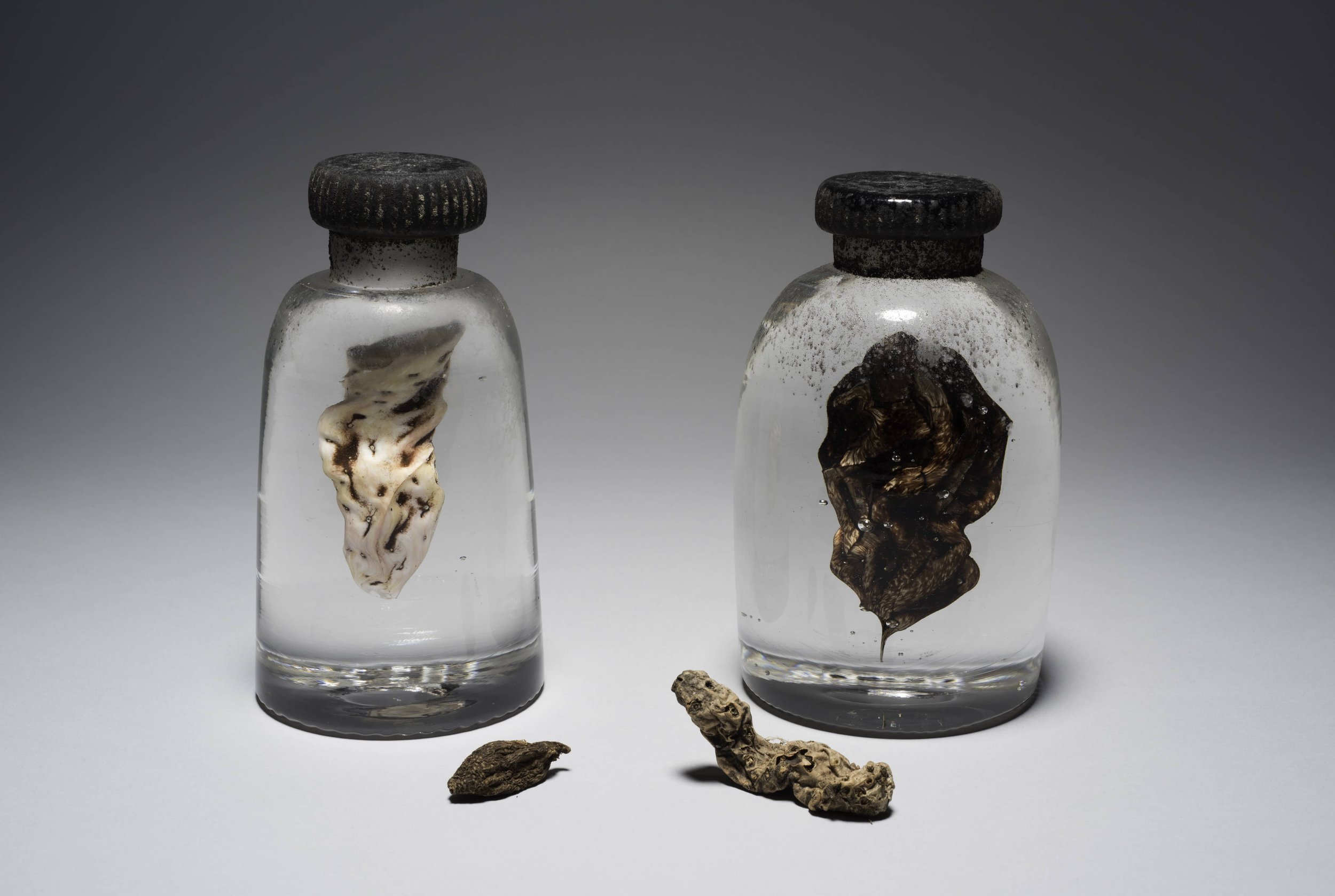Reflections with Renée Stout: A Two-Way Mirror Q&A
Renée Stout (American, born 1958). High John the Conqueror and Orrisroot, Made at the Museum in 2011. Blown and sculpted glass, organic material. Collection of Museum of Glass, gift of the artist. Photo by Duncan Price.
Structured as an exploration of W.E.B. DuBois’ theory of double consciousness, A Two-Way Mirror is an exhibition featuring contemporary Black artists who have used glass to create work which deconstructs social, cultural, gender, and racial identity concerns. In this Reflections Q&A series, exhibition curator Jabari Owens-Bailey sits down with exhibiting artists to learn more about the stories behind their work.
Renée Stout grew up in Pittsburgh, Pennsylvania, and received her BFA from Carnegie Mellon University in 1980. In 1985, she moved to Washington, DC, and began to explore the roots of her African American heritage. She looks to the belief systems of African peoples and their descendants throughout the African Diaspora, as well as to the world and her immediate environment, for the inspiration to create works that encourage self-examination, self-empowerment, and self-healing.
The lives of Stout’s imaginary characters unfold in a variety of media, including painting, mixed media sculpture, photography, and installation. The recipient of awards from the Joan Mitchell Foundation, The Pollock-Krasner Foundation, and the Louis Comfort Tiffany Foundation, Stout has shown her work in solo and group shows throughout the United States, and in England, Russia, and the Netherlands.
Jabari Owens-Bailey: What made you want to work in glass?
Renée Stout: I have a very good friend who is a glass artist, Elizabeth Lyons, whom I met in 1992. I was always fascinated by the things she could do with glass. Around 2011, she encouraged me to apply for the Pilchuck Glass School residency and I did. That experience was so amazing that, when the opportunity to do something at Museum of Glass came up a few years later, I jumped on it and had a great experience there as well. My residency at Museum of Glass resulted in a major tableau I created that featured several glass pieces produced for me by the wonderful artist/gaffers at the museum, titled The Rootworker's Worktable. Through all of those experiences, I became fascinated by glass as a medium, and continue to be.
The Rootworker’s Worktable. Photo courtesy of the artist.
JOB: Hoodoo is a theme that is in a lot of your work. Why is this set of practices so important?
RS: Hoodoo is a complex spiritual belief system created by enslaved Africans. It is a hybrid of predominately ancient and varied African religions traditions, Christianity, and Native American herbal knowledge. Hoodoo was a system that helped enslaved Africans maintain hope and perseverance as they endured the most inhumane conditions. As a descendent of these people, I feel I owe it to those Ancestors to celebrate that sophisticated system that helped them survive. For me, that system serves as an inspiration and a form of resistance against the very same forces of injustice that have morphed into new forms in the twenty-first century.
JOB: What are Orrisroot and High John de Conqueror generally used for?
RS: Both "all-purpose" roots were and are used for a variety of situations. Orrisroot has traditionally been used in love spells, as well as in perfume production to this day. I like it for its soft, powdery scent because it's calming. I see it as having "feminine" energy. While High John de Conqueror root can also be used to draw love, It has a more "masculine" energy and is also used in protection spells. The whole root can be carried in one's pocket or purse as an amulet for the same reasons. "Hi John" has a very deep, pungent smell that's similar to tobacco. I keep jars of these roots that I sometimes go to and remove the top just to take a deep whiff, very sensual. I like the idea that people had this kind of faith in and connection to nature.
JOB: What significance does being a maker play in your life?
RS: For me, being a maker is a calling. Creativity is my “religion." Going into my studio is the most spiritual place as can be as I witness the world going to hell in a hand basket, as my paternal grandmother used to say. During these strange days, making has been the thing that has continued to sustain my morale, my resistance, and my faith that, ultimately, the universe is always working to create balance for itself no matter how humans may choose to behave.
The Rootworker’s Worktable, detail. Photo courtesy of the artist.
A Two-Way Mirror: Double Consciousness in Contemporary Glass by Black Artists is on view at Museum of Glass until October 27, 2024.



